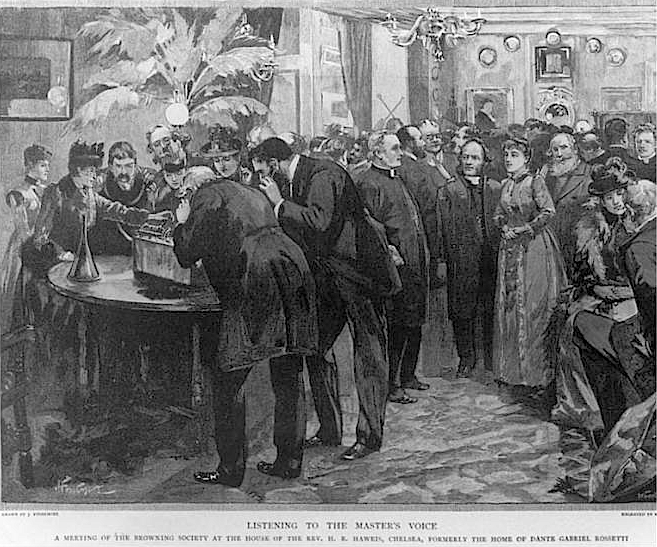If you're planning on sex with women over 60 videoscelebrating Christmas in the Upper Midwest or the Dakotas this year, you're going to need to get a thicker coat.
A true Arctic air mass -- the coldest of the season so far -- is projected to swirl down from the Far North, crossing the U.S. border with Canada as early as Wednesday, and potentially oozing its way all the way down to Texas, and east to New York City.
Right now, however, it appears the East Coast may escape the worst of the cold, at least initially.
SEE ALSO: Emmanuel Macron lures top U.S. climate scientists fleeing from Trump research cutsThe precise details of this cold snap are still a bit fuzzy, specifically concerning whether a winter storm develops along the boundary separating the frigid air from more seasonable temperatures. It's conceivable that areas from Texas to New England could have a white or icy Christmas this year, though this won't become clear for another few days.
In Denver, Christmas Eve could see temperatures as cold as 30 to 40 degrees Fahrenheit below average, according to computer model guidance. On Christmas Day itself, the core of the coldest air may be located over the big cities of the Midwest, including Minneapolis, Milwaukee, and Chicago. While low temperatures may plunge below zero Fahrenheit, this cold snap is not likely to break many records, in part because of the lack of widespread snow cover across the U.S.
This Tweet is currently unavailable. It might be loading or has been removed.
As detailed in a post by the Washington Post's Capital Weather Gang blog, computer model projections do not yet agree on whether the frigid weather will move far enough east to affect the heavily-populated corridor from Washington, D.C. to Boston.
The cold blast will have the opposite affect in the Arctic, where unusually mild temperatures for this time of year (it will still be cold, just not as cold as usual) are forecast. Temperatures in Alaska could be 30 to 40 degrees Fahrenheit above average, while Arctic-wide temperatures also look to be far above average as well.
The development of this warm Arctic, cold continents pattern is something researchers have been noticing that appears to be occurring more frequently during recent winters. The pattern is consistent with recent changes in the wintertime jet stream, which some scientists think is tied to the loss of Arctic sea ice. However, this is still an area of active research, with no clear consensus yet.
Despite the 24-hour darkness in the Arctic, sea ice extent is still running well below average for this time of year.
 Original image has been replaced. Credit: Mashable
Original image has been replaced. Credit: Mashable On Monday, the National Oceanic and Atmospheric Administration (NOAA) reported that the average Arctic sea ice extent during November was 11.6 percent below the 1981-2010 average. This was the third-smallest since records began in 1979.
The average Arctic sea ice coverage in November was 11.6 percent below the 1981-2010 average, the third-smallest since records began in 1979. The Chukchi and Bering Seas off the northwest coast of Alaska were almost completely devoid of sea ice, which has been altering the weather across Alaska and adjacent parts of Russia as well.
This is causing problems for animals as well as human populations that rely on the sea ice for hunting prey.
This Tweet is currently unavailable. It might be loading or has been removed.
One of the main reasons for the cold snap will be a major northward bulge, or ridge, in the jet stream across the West, which will exacerbate California's wildfire problem.
The Thomas Fire near Ventura and Santa Barbara is likely to become the state's largest blaze on record since reliable data began in 1932.
On the flip side of that ridge is a southward dip, or trough, in the upper level winds, which will help transport the frigid air into middle America.
(Editor: {typename type="name"/})
 Precursors to Today's Technology: These Products Had the Right Vision
Precursors to Today's Technology: These Products Had the Right Vision
 An Oral History of Gentrification Gives Us Stories—Not Stats
An Oral History of Gentrification Gives Us Stories—Not Stats
 Watch: Orson Welles on His Friendship with Ernest Hemingway
Watch: Orson Welles on His Friendship with Ernest Hemingway
 Watch Branden Jacobs
Watch Branden Jacobs
 Dallas Mavericks vs. Boston Celtics 2025 livestream: Watch NBA online
Dallas Mavericks vs. Boston Celtics 2025 livestream: Watch NBA online
Use Your Gaming Laptop and Play On Battery Power? Is It Possible?
Being a Total Bore Is Kind of Interesting
 Fun, GamesBy Sadie SteinJune 2, 2015Our Daily CorrespondentUnknown painter, Melancholia(detail), 152
...[Details]
Fun, GamesBy Sadie SteinJune 2, 2015Our Daily CorrespondentUnknown painter, Melancholia(detail), 152
...[Details]
Listen—Robert Browning Becomes the First Recorded Poet, 1889
 The Sound of a Voice That Is StillBy Dan PiepenbringMay 7, 2015Listen“Listening to the Master’s Voic
...[Details]
The Sound of a Voice That Is StillBy Dan PiepenbringMay 7, 2015Listen“Listening to the Master’s Voic
...[Details]
This Doll’s Brittle, Screeching Voice Will Infect Your Soul
 If I Should Die Before I WakeBy Sadie SteinMay 6, 2015Our Daily CorrespondentThe Edison Talking Doll
...[Details]
If I Should Die Before I WakeBy Sadie SteinMay 6, 2015Our Daily CorrespondentThe Edison Talking Doll
...[Details]
NYT Connections Sports Edition hints and answers for February 11: Tips to solve Connections #141
 Connections: Sports Editionis a new version of the popular New York Times word game that seeks to te
...[Details]
Connections: Sports Editionis a new version of the popular New York Times word game that seeks to te
...[Details]
Philip Larkin’s Awful Vacation
 The Spit of RecollectionBy Dan PiepenbringJune 2, 2015CorrespondencePhilip Larkin.A letter from Phil
...[Details]
The Spit of RecollectionBy Dan PiepenbringJune 2, 2015CorrespondencePhilip Larkin.A letter from Phil
...[Details]
How a Tube of Peppermint Foot Cream Made Me Time Travel
 Back to ChicagoBy Sadie SteinJune 15, 2015Our Daily CorrespondentFrom a travel-poster advertising Ch
...[Details]
Back to ChicagoBy Sadie SteinJune 15, 2015Our Daily CorrespondentFrom a travel-poster advertising Ch
...[Details]
What Jules Verne and John Quincy Adams Had in Common
 Science Fiction in the White House, and Other NewsBy Dan PiepenbringMay 8, 2015On the ShelfA plea to
...[Details]
Science Fiction in the White House, and Other NewsBy Dan PiepenbringMay 8, 2015On the ShelfA plea to
...[Details]
Lego free Valentine's Day Heart: How to get free Lego
 FREE LEGO:On Feb. 9, build a Lego Valentine's Day Heart at participating stores and take it home wit
...[Details]
FREE LEGO:On Feb. 9, build a Lego Valentine's Day Heart at participating stores and take it home wit
...[Details]
The Sound of Sound: Two Remembrances of Ornette Coleman
 Two Remembrances of Ornette ColemanBy Brian Cullman & Rafi ZaborJune 15, 2015On MusicColeman die
...[Details]
Two Remembrances of Ornette ColemanBy Brian Cullman & Rafi ZaborJune 15, 2015On MusicColeman die
...[Details]
接受PR>=1、BR>=1,流量相当,内容相关类链接。